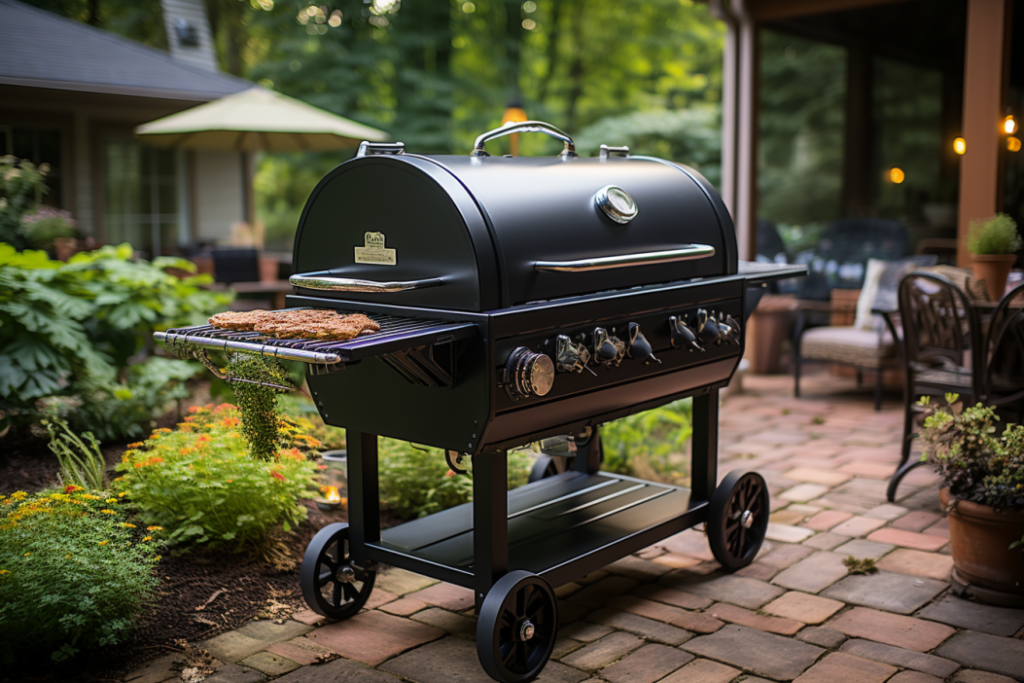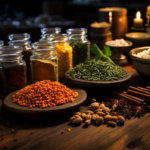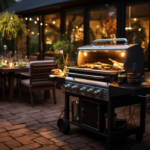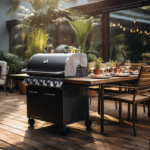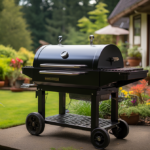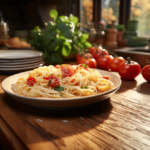Table of Contents
Unlocking the Secrets to Achieving Perfectly Cooked Meats and Vegetables on the Charcoal Grill
There’s something truly magical about cooking over hot coals and producing rich, smoky flavors. Charcoal grilling has been a beloved pastime for decades, and there’s no wonder why: it’s easy, affordable, and produces some of the most mouth-watering dishes. Whether you’re a seasoned pitmaster or a greenhorn at the grill, there’s always something new to learn about the art of charcoal grilling. In this article, we’re sharing some of the best techniques and recipes to make your charcoal grilling game strong. From perfectly seared steaks to juicy veggies, you’ll be able to achieve that char-grilled goodness you crave in no time.
Choosing the Right Charcoal: Understanding the Differences between Lump and Briquettes
Charcoal is an essential ingredient when it comes to grilling over hot coals. It provides the heat and the smoky flavor that elevate grilled food to a whole new level. But with so many types of charcoal available in the market, choosing the right one can be quite overwhelming.
Here, we will discuss the two most commonly used types of charcoals: lump and briquettes.
Lump Charcoal
Lump charcoal is made by burning wood until it turns into charcoal. It comes in irregular shapes and sizes and is usually more expensive than its briquette counterpart. The major advantage of using lump charcoal is that it burns hotter and for a longer time, making it ideal for searing meats and grilling large items for extended periods.
Briquettes Charcoal
Briquettes charcoal, on the other hand, is made by compressing sawdust and other materials into uniform shapes. It burns longer and more evenly than lump charcoal but does not produce the same searing heat. Briquettes are usually more affordable than lump charcoal.
When choosing between lump and briquettes, consider what you will be grilling. If you’re planning on grilling steaks or other meats that need high heat, go for lump charcoal. If you’re grilling burgers, hotdogs, or other smaller items over a longer time, briquettes are a great pick.
Another factor to consider is the flavor of the food. Since both types of charcoal are made from different materials, they can affect the final flavor of the food. Lump charcoal imparts a more natural, smoky flavor, whereas briquettes may have added chemicals that can affect the taste.
Choosing the right charcoal for your grill is essential for producing delicious grilled food. Keep in mind what you’re grilling and the type of flavor you’re looking for when selecting between lump and briquettes charcoal.
Mastering the Grill: Heat Zones and How to Control Temperature
One of the keys to becoming a grill master is understanding temperature control. Charcoal grilling is all about managing the heat, and this means knowing how to create different heat zones on your grill. In this section, we’ll go over the basics of heat zones and how to control temperature, so you can produce perfectly cooked food every time.
Understanding Heat Zones
Creating heat zones on your charcoal grill is essential for cooking different foods at the same time. Heat zones control the intensity of the heat and dictate how quickly your food cooks. There are typically three heat zones to consider:
- Direct Heat Zone: This is the hottest zone on the grill. Food is cooked directly over the hot coals, and this creates a sear that enhances the flavors of meat, fish, and vegetables.
- Indirect Heat Zone: This zone is cooler than the direct heat zone and is ideal for slow cooking or smoking. The food is cooked to the side of the coals, and this allows for a more gentle and even cooking process.
- Warmth Zone: This is the area of the grill with no coals or flame. It is not meant for cooking but instead serves as a place to keep cooked food warm while the remaining food is still cooking.
Controlling Temperature
Once you understand the different heat zones, it’s time to learn how to control the temperature. Here are some tips to keep in mind:
- Open and Close Vents: The vents on your grill dictate how much oxygen enters and exits, which regulates the grill’s temperature. To raise the temperature, open the vents. To lower the temperature, close them.
- Moving Coals: If a direct heat zone is getting too hot, you can quickly move the coals to the side of the grill to create an indirect heat zone.
- Adding Charcoal: Adding charcoal to the grill can help raise the heat, but you need to be careful not to add too much and overheat the grill.
- Preheating the Grill: Before you begin cooking, make sure your grill has had time to preheat. This can take anywhere from 15 to 30 minutes, depending on the size of your grill and the amount of coal you have used.
By understanding heat zones and temperature control, you’ll gain the confidence needed to produce perfectly cooked food on the charcoal grill. Practice makes perfect, so don’t be afraid to experiment with different heat levels and techniques to uncover your own grill master skills
Know Your Meat
One of the most challenging aspects of cooking on a charcoal grill is getting the timing right. Cooking times can vary based on the cut of meat and its thickness, the temperature of the grill, and even the humidity outside. Whether you’re cooking steaks, burgers, or chicken, these tips will help you achieve perfect doneness every time.
Different meats require different cooking times to achieve perfectly cooked results. For example, a thick cut of beef like a ribeye will take longer to cook than a thin cut like a flank steak. Keep in mind that the more marbling a cut has, the more time it will take to cook.
Use a Meat Thermometer
To ensure that your meats are cooked to perfection, invest in a high-quality meat thermometer. Insert it into the thickest part of the meat, making sure it doesn’t touch any bones. For medium-rare steak, aim for an internal temperature of 130-135 degrees Fahrenheit. For chicken, cook to an internal temperature of 165 degrees Fahrenheit to avoid any risk of foodborne illness.
Practice Patience
While it’s tempting to constantly check on your meat, resist the urge to flip it too often or lift the lid on the grill. Each time you do so, you lose heat and extend the cooking time. Instead, let your meat cook undisturbed for a few minutes before flipping it over.
Rest Your Meat
After your meat is removed from the grill, let it rest for 5-10 minutes before cutting into it. This will allow the juices to redistribute and will result in a more tender and flavorful end product.
By following these tips and practicing patience, you can achieve perfect results every time you fire up your charcoal grill. Happy grilling!
Conclusion
Charcoal grilling is much more than just cooking food over hot coals – it’s an art form that can take years to master. With the right techniques and recipes, you can produce some of the most amazing smoky flavors and perfectly cooked meats and vegetables. In this article, we’ve shared some of the essential tips and tricks for successful charcoal grilling. By choosing the right charcoal, mastering the grill’s temperature, experimenting with different smoke woods, and timing your meals correctly, you’re well on your way to becoming a true pitmaster. So fire up those coals, start grilling, and with some practice, you’ll be creating delicious, smoky flavors that will keep everyone coming back for more.

